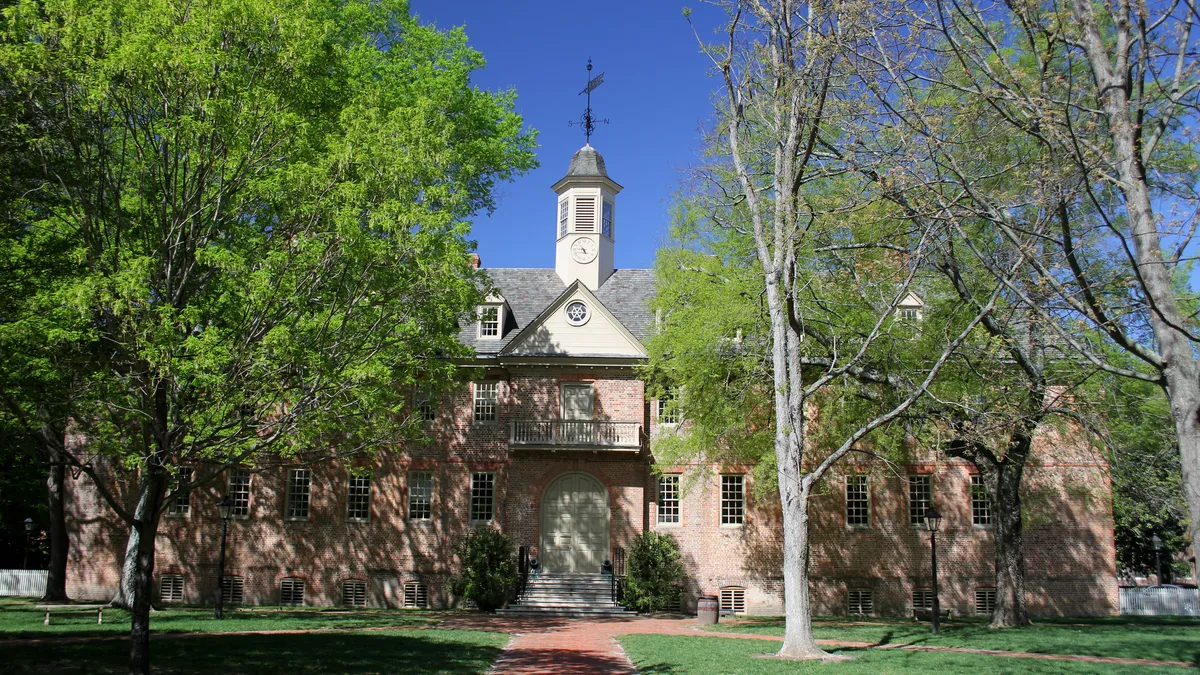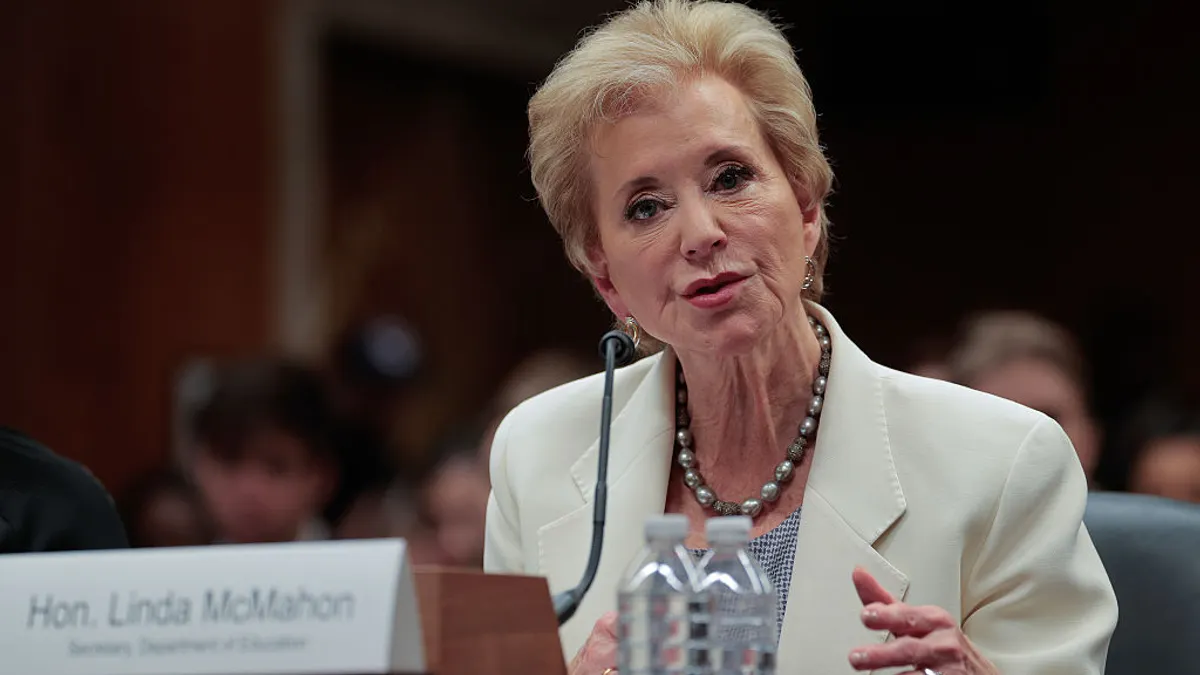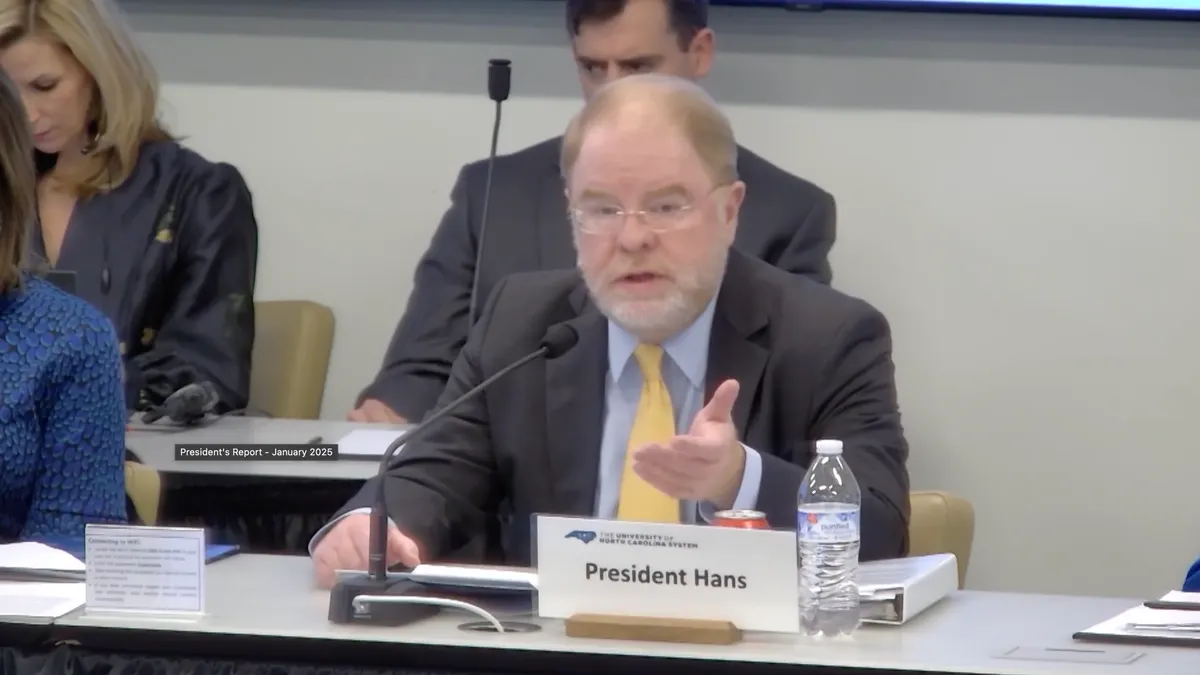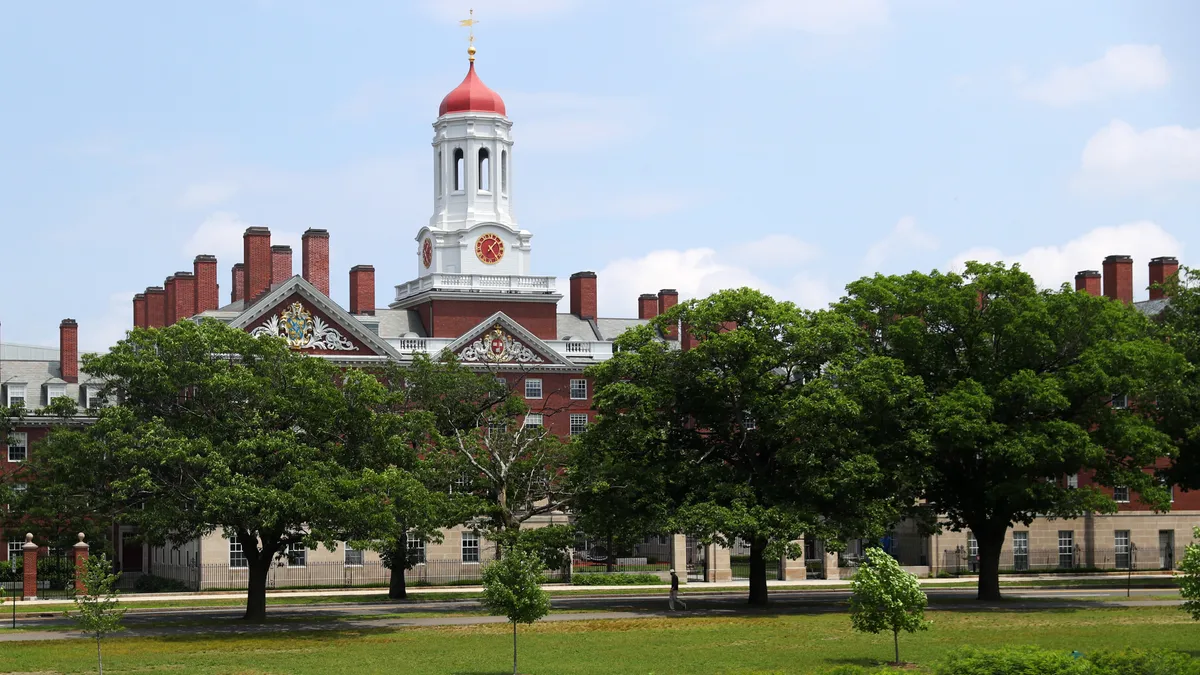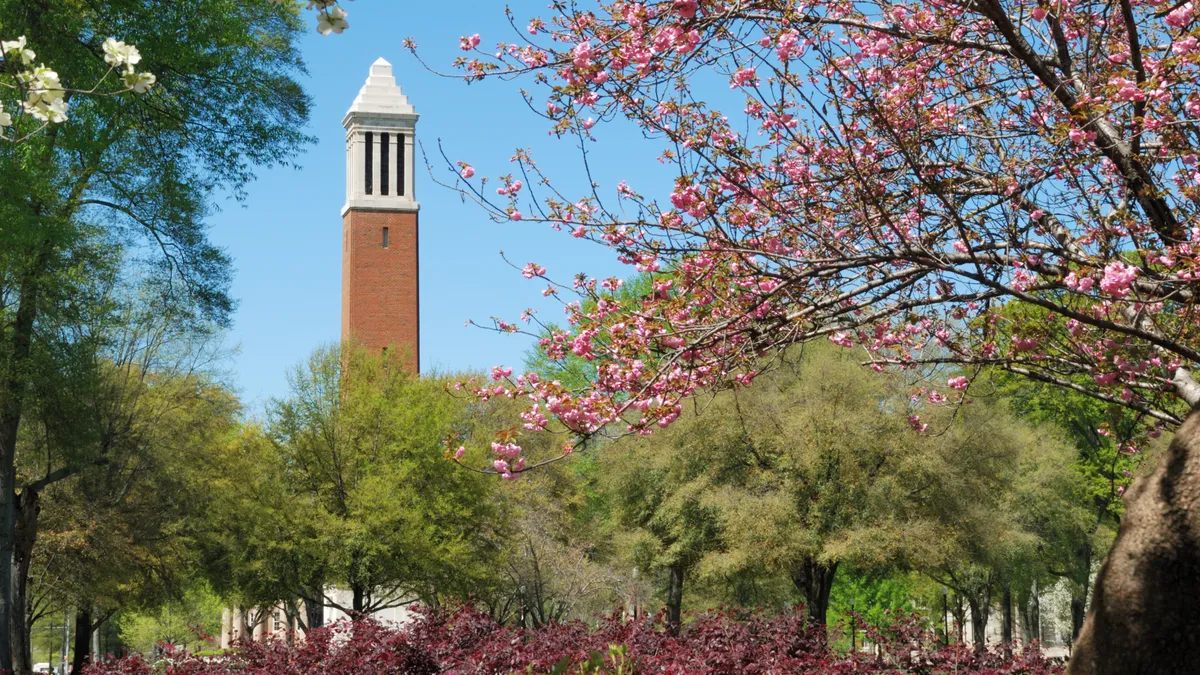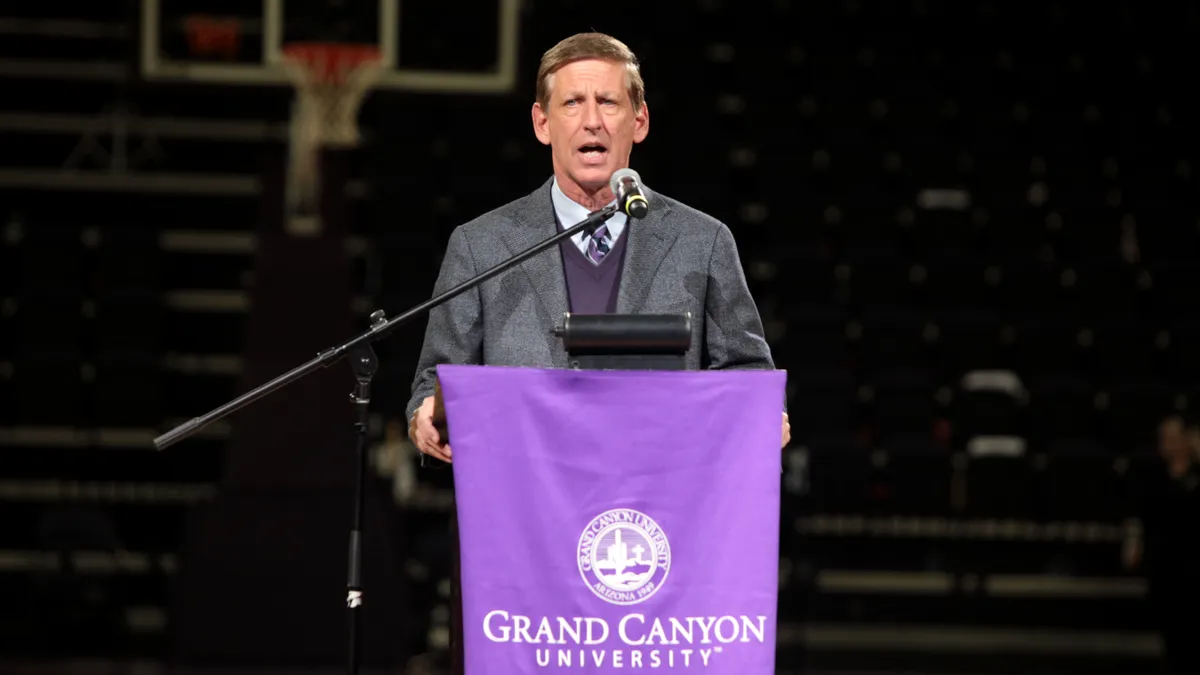Higher education has seen widespread contraction since the pandemic — mergers, closures and acquisitions are frequent and continuing. But against that trend, a few colleges are looking for more independence and freedom to define themselves.
Richard Bland College, in Petersburg, Virginia, is one such institution. The junior college was created in 1960 as part of William & Mary, the 330-year-old public university that operates 50 miles east in Williamsburg. Today, the two institutions are independent in most ways, including through separate accreditation. But the Richard Bland administration has been pushing to sever its last tie to William & Mary — governance.
The same board, entirely appointed by the governor, oversees the two institutions and is not subject to local control, as some other public college boards are.
“The governor was appointing members thinking of William & Mary,” said Debbie Sydow, president of Richard Bland. “Board members would learn that they were also governing Richard Bland only after they got on the ground and through the orientation process.”
Splits and separations are not unheard of in higher ed, but they are becoming exceedingly rare.
There are still a couple of reasons institutions may choose to try to separate, according to Ricardo Azziz, principal at Strategic Partnerships in Higher Education Consulting Group. (Azziz writes a monthly Mergers Watch column for Higher Ed Dive.)
The main driver is often a divergence in the mission of two institutions.
“Separations also may occur when the goal of that college or program just doesn’t fit in anymore with the goals of the larger institution,” said Azziz, who led the merger that resulted in Georgia Regents University, now Augusta University
But separations can also happen when an institution wants more control over its financial situation or where there is a clash of egos among leaders, he said.
There is no bad blood between Richard Bland and William & Mary, Sydow said, but the two are moving in different directions. The William & Mary Board of Governors supported Richard Bland's bid for independence, according to a statement from a William & Mary spokesperson.
Richard Bland is facing the same demographic changes as other institutions, but is working to differentiate itself and build a distinct identity. Unlike most community colleges, it’s primarily residential and not open admission. The college is building partnerships with the local manufacturing industry, building out its dual enrollment program, and focusing on work-based learning, according to Sydow. So far it has seen increases in enrollment since the pandemic. The college now has about 750 residential students and 1,500 dual enrollment students, Sydow said. (William & Mary has more than 9,000.)
“A board that oversees the College of William & Mary, which is in its own way evolving, really was not best positioned to govern Richard Bland as it became more complex, more regionally focused, and essentially became more connected to the Petersburg region and the manufacturing economic base of our area,” Sydow said. “It’s frankly a bit of an alien entity.”
Breaking up in a world of mergers
Separations and mergers often stem from a similar motivation — the belief that a change in relationship could benefit the institutions, said Guilbert Hentschke, dean emeritus of public school administration at the University of Southern California. But the current focus on merging in the industry makes an unwinding stand out.
“They’re seeking something different,” he said. “It’s more than independence, it’s autonomy — which is similar to independence — it’s distinctiveness.”
Richard Bland is not the only college attempting a separation right now. In late March, Union Theological Seminary and Episcopal Divinity School announced they would be separating. Episcopal Divinity had merged with Union in 2017, after significant financial losses prompted the school to announce it would no longer offer degrees. It sold its Massachusetts campus to merge with Union, which is located in New York City.
But circumstances have changed once again. “As we look to the future of EDS, our announced changes are in response to the growth of our community and its expressed desire for increased and broader access to Episcopal theological education outside of traditional campus-based degree programs,” Kay Kramer, chair of Episcopal Divinity’s Board of Trustees, said in a March statement.
Similarly, Indiana University-Purdue University Indianapolis, a 54-year-old collaboration between the two public universities, announced last year that it will split into two separate colleges, a move to be completed by fall 2024. The institution enrolls more than 27,000 students, according to its website.
Purdue will assume responsibility for IUPUI's engineering, technology and computer science programs. The remaining departments will become Indiana University at Indianapolis.
Indiana and Purdue also seem to have an eye toward differentiating themselves from one another.
“The decoupling better positions both universities for the future — allowing them to further promote and build on the programs each is known for,” said Kevin Brinegar, president and CEO of the Indiana Chamber of Commerce, in a news release on the split. “In turn, this will likely attract more students, afford them increased collaboration with their cohort and overall better prepare them for the jobs of today and tomorrow.”
Still, the trend of mergers and closures appears to be the dominant one.
“These situations are really far, far outside the norm right now of what’s happening in higher education which is really a wave of consolidation,” said Brian Weinblatt, founder and principal at Higher Ed Consolidation Solutions, a merger consultancy firm. “More independence means you’re really on your own, and there’s no broader mothership to help you.”
For Richard Bland College, the future and details of its independence remain a bit uncertain. While legislation to secure the separation advanced in the Virginia Legislature this year, the effort died in the House of Delegates appropriations committee.
But Sydow said she is still hopeful.
“At a time when higher education is under threat, it does make sense also to have some spinoff,” she said, “to have some institutions that are just trying different things and trying to operate in a different way.”
Correction: A previous version of this story incorrectly stated where William & Mary is located in relation to Richard Bland College. It has been updated.

